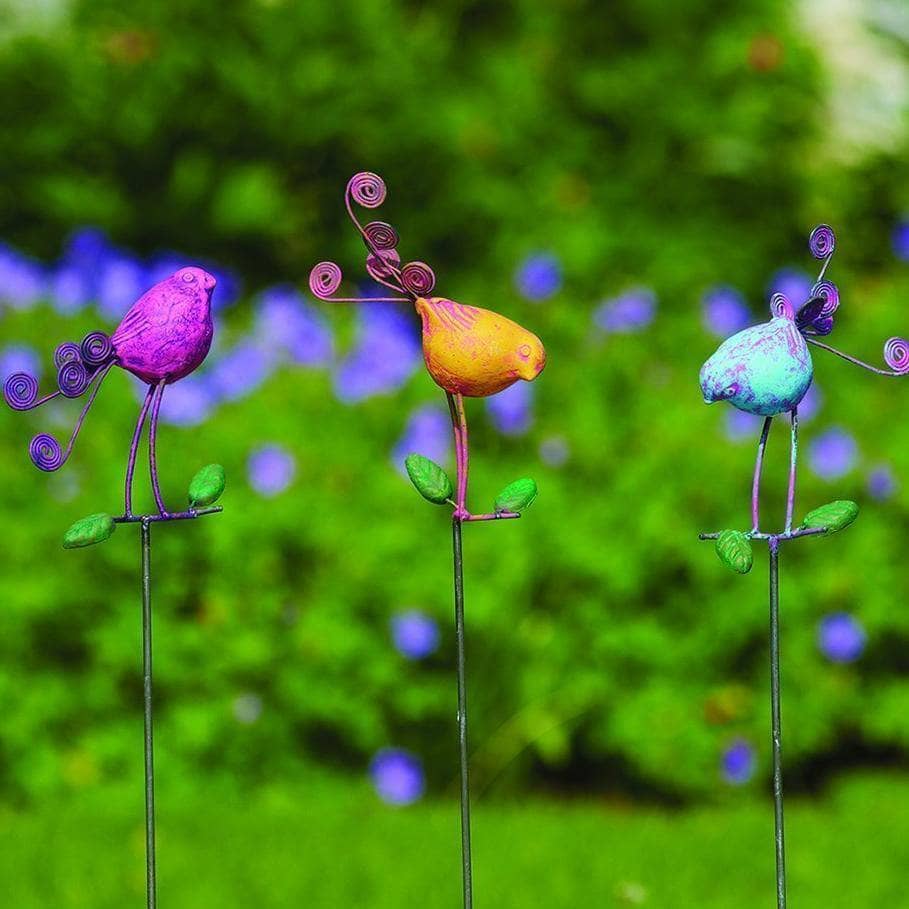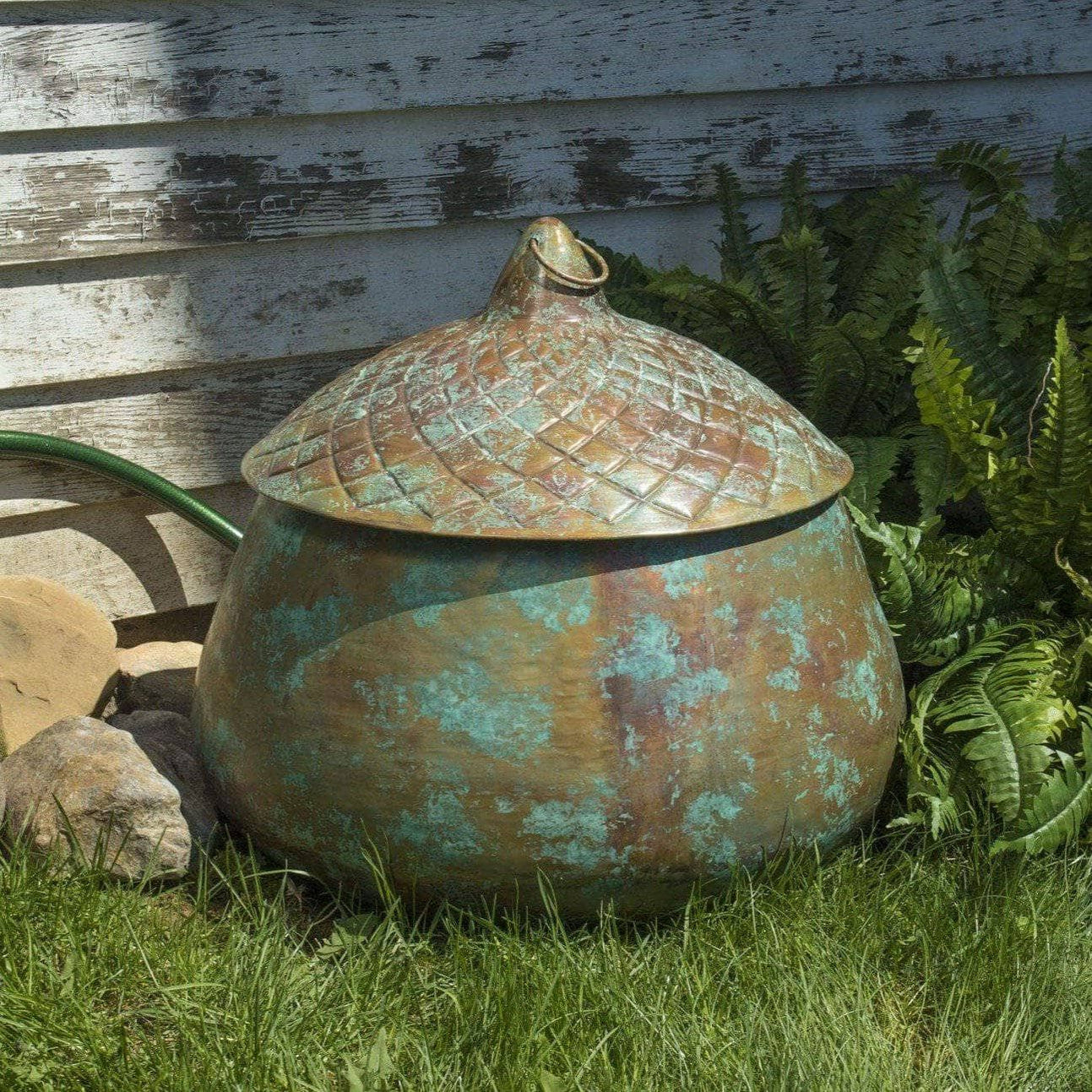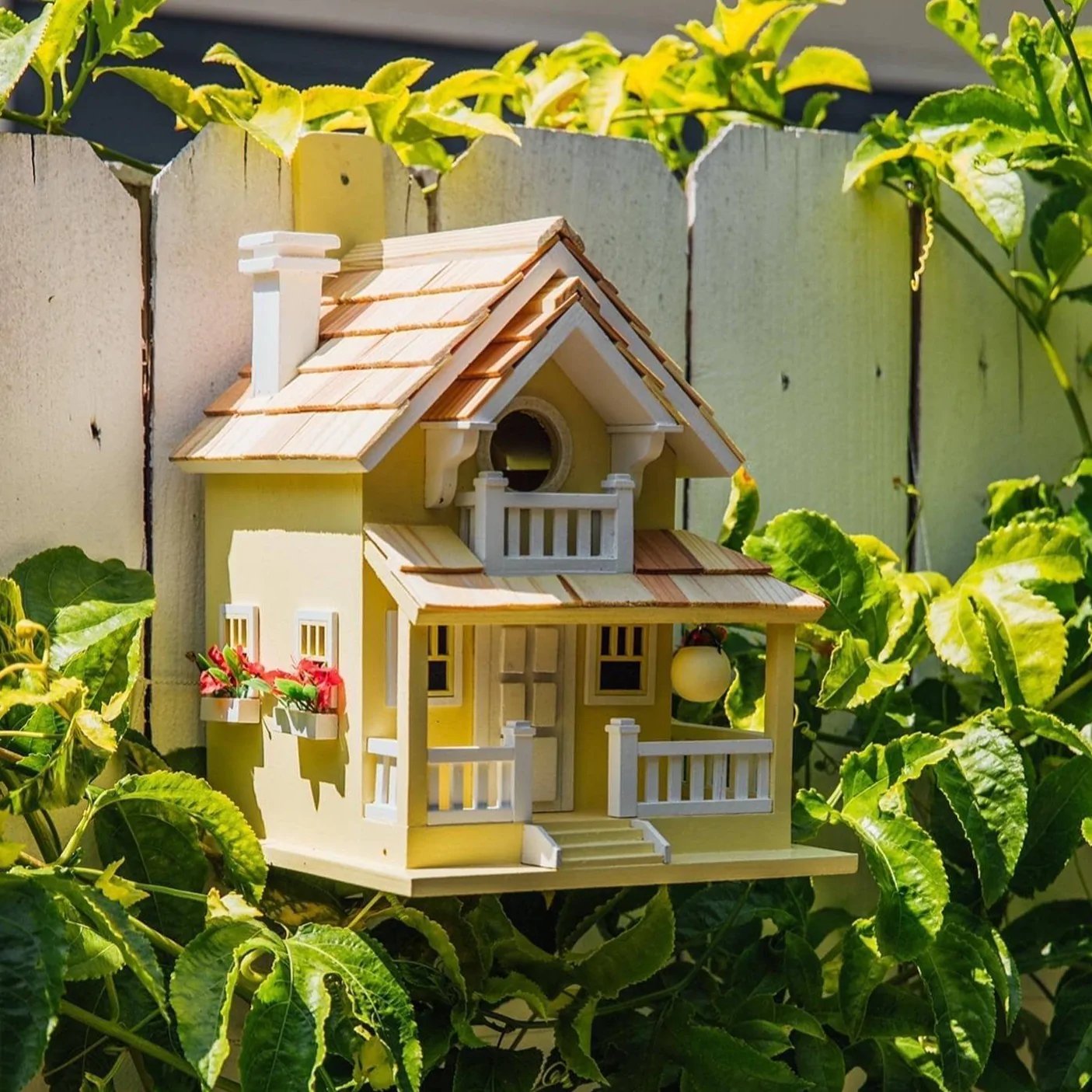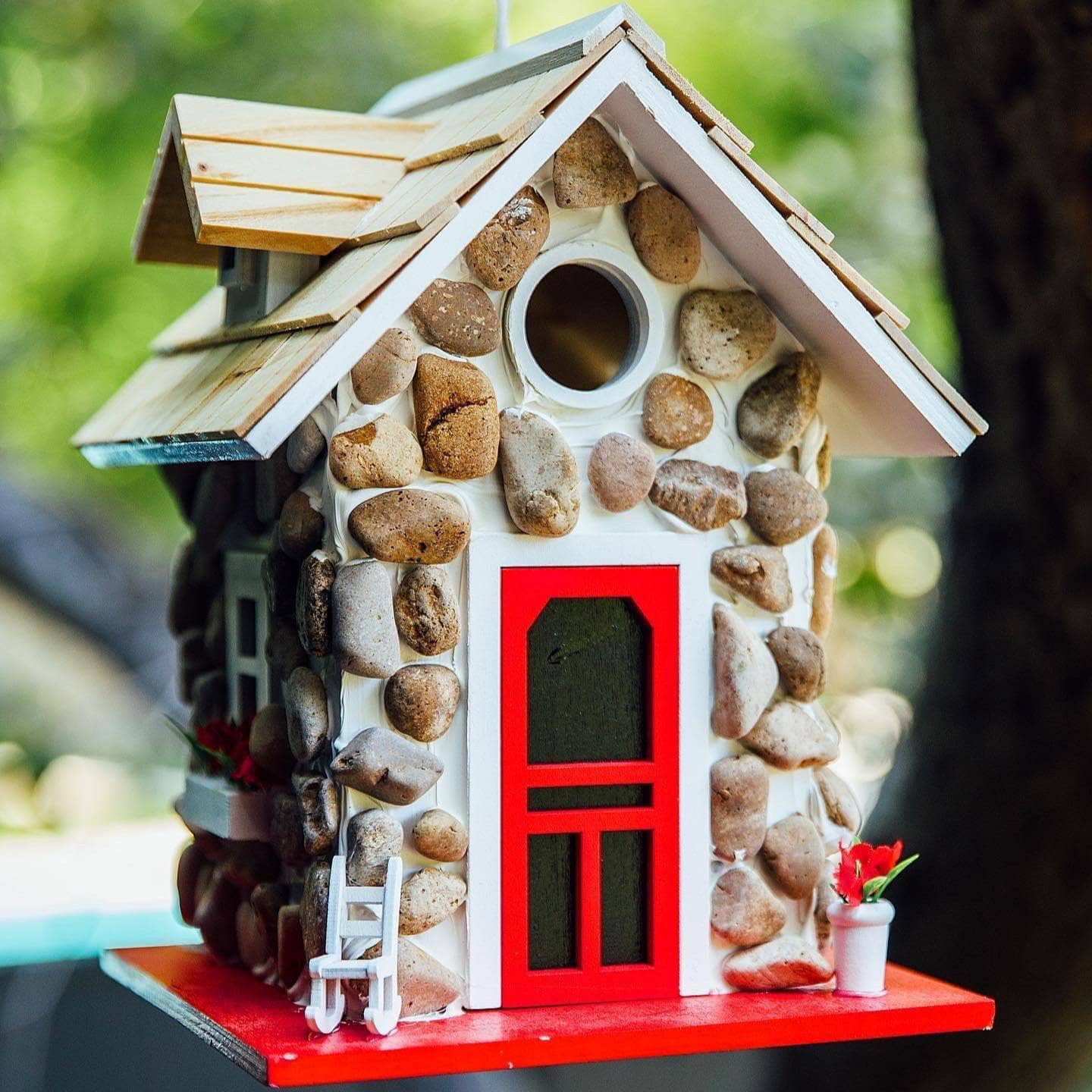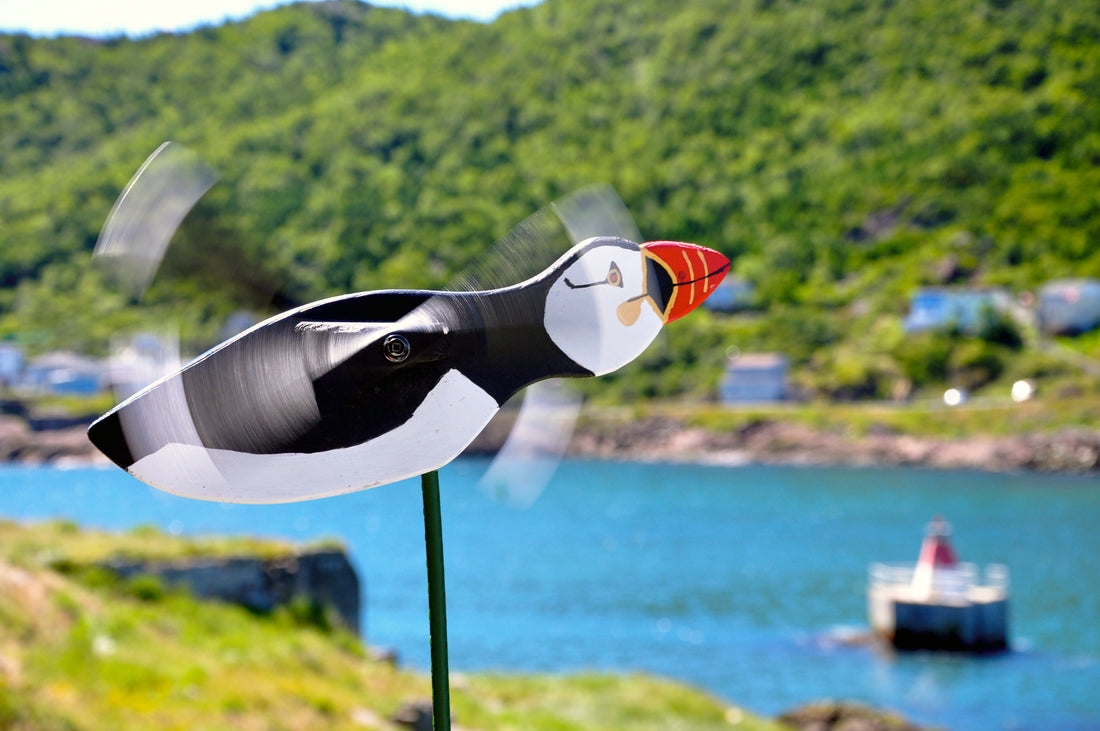
What is a whirligig, anyway?
Share
A whirligig is an object that moves or spins, like a pinwheel, a weathervane or a spinning toy. Oftentimes, they are colorful pieces of yard ornamentation and usually boast rural motifs, even though you'll find them everywhere from New York City to a sleepy village in New Mexico. Folksy whirligigs tend to depict iconic, small-town tasks like herding sheep, churning butter or harvesting corn.
You can buy whirligigs in antique shops, specialty shops, and even online... or, you could build one yourself!

Usually, a whirligig is propelled when the wind blows, but this is not always the case. Some whirligigs are actually powered manually, or by a motor or even friction.
While "whirligig" might look a little strange if it's your first time seeing it, the word is actually quite easy to pronounce: just sound it out. The funny-looking word is actually derived from two Middle English words, whirlen and gigg, which mean "to whirl" and "top", respectively. The first known use of the word the way we use it today was in the 14th century, according to Merriam-Webster.
There's also a saying you may have heard of that includes the word: "a whirligig of time". This is actually a famous line delivered by Feste in Shakespeare's comedy Twelfth Night. The phrase refers to the maddening, come-back-to-bite-you, karmic nature of time.
In this article, we'll cover just about everything there is to know about whirligigs: their origins, how they work, how to make them, what their purpose is, where you'll find them for sale and how much it'll cost to buy them.
What are the origins of whirligigs?
Nobody knows for sure the origins of the whirligig. There is a lot of conflicting information about the first whirligig. We believe the first whirligig was a button whirligig, a very simple spinning toy that can be traced back to 500 BC, when Native American children played with them.
String whirligigs started popping up in China around 400 BC. These "friction" devices, which are sometimes referred to as gee haws, require the user to power the whirligig by rubbing together a stick and a shaft.
Interestingly, button spinners also made a comeback during the Great Depression, when there was no money to be spent on much of anything, let alone toys. These original and replica toys—both the button and friction versions—can often be found in craft, souvenir and secondhand stores near the Appalachian Mountains.
Also known as buzzers, these whirligig toys were once made with nothing but clay, bone and hide. In the 1920s, they were made with a button or coin and a piece of string.
So the whirligig began as a hand toy, but by the mid 1850s, whirligigs were more and more an art form. The pieces were increasingly made, bought and sold as folk art and yard ornamentation. Whirligigs were no longer just toys or apparatuses that announced wind direction, but token garden decor that depicted little details of everyday country living.
When people talk about whirligigs today, they are almost certainly referring to the folkish version. There's even a very popular Whirligig Festival in Wilson, North Carolina held every fall.
It's also impossible to talk about whirligigs without talking about the weather vane, which is technically a wind-powered whirligig. Weather vanes are decorative and functional instruments that reveal which way the wind blows. These instruments were invented to announce wind direction around the same time in two different places: China and Greece, around 200 BC.
Today, when you think of a weathervane, you probably think of a rooster-inspired weathervane whirling atop the rooftop of a barn. While the cockerel design is almost certainly the most popular, there are plenty of other styles, too.
Our Happy Gardens team, of course, has been searching for some weathervanes to add to our collection very soon! You can rest assured that if we set our eyes on a gorgeous, hand-crafted one we know our customers will love, we will add it our shop right away.
How does a whirligig work?
A whirligig works by using force (usually wind, but sometimes friction, a motor or a hand) to propel itself into a whirling motion. Folksy whirligigs are a moving art form in and of themselves; they use their own blades to tell a story. That's one of the things that make whirligigs so cool: their function is a part of their beauty.
In order to truly understand a whirligig, we'll have to give you a little lesson in physical science and kinetic energy. Think about how a windmill produces clean energy by harnessing the power of the wind, and this explanation will probably make a lot more sense!
So, a whirligig actually captures and transfers the wind's energy into kinetic energy or rotational energy, which is then used to power the moving art piece.
Of course, to capture the energy, you need the right conduit: a pinwheel or other blade-like surface. The bigger the blade's surface area, the easier it is for the piece to achieve terminal speed, even with relatively low wind speed. A pinwheel with tiny and short blades would require more forceful, higher wind speed to achieve terminal speed.
That's why electric grids are powered by jumbo windmills, like the iconic ones outside of Palm Springs, California.
How do I make a whirligig?
If you're looking to make your own whirligig toys, you definitely can! As we mentioned before, the simplest hand toy can be made using quite rudimentary ingredients. To make a traditional, colonial whirligig, all you need is some string and one button! These whirligigs plans will help you tremendously if you wish to make a simple something with your children.
Nostalgic publisher Dover Publications, which is headquartered in Mineola, New York, also has a variety of books about whirligigs. Each book is jam-packed with patterns, the directions are very clear, and many of the plans are perfect for beginners.
One of the most beloved books about whirligigs, "Easy-to-Make Whirligigs", is published by Dover. The book is by expert builder Anders S. Lunde.
Anders S. Lunde is a prolific writer of whirligig-related books, having also written "Action Whirligigs", "Whimsical Whirligigs and How to Make Them", "Whirligigs: Design and Construction", "Making Animated Whirligigs", "Whirligigs in Silhouette", and "Whirligigs for Children Young and Old", "Whirligigs and More Whirligigs" and "More Whirligigs: Large-Scale & Animated Figures."
If you want to check out any of the books before you buy, you can preview many of them right on the Dover website for free, thanks to Google Preview.
Lunde, who goes by Andy, studied sociology in college and served in the U.S. Army during World War II. Shockingly, it wasn't until he retired that he began woodworking, after his wife gifted him a book about weathervanes. He attempted his first whirligig straight away, but it was completely one-dimensional and did not work. Once he got the hang of the craft, he was off to the races. He continues to fill his home with whirligigs, and happily shares his plans for both jaw-droppingly complex and beginner-friendly whirligigs with the world.
While colonial whirligigs can be very simple, the more folk art-inspired whirligigs can be quite ornate. There is tons of inspiration online, including many DIY whirligig plans on Pinterest.
Here are some of our favorite ideas for a folksy whirligig:
- A person rinsing laundry by hand
- A person paddling a canoe (the paddles are the blades)
- An angry cook bonking another cook on the head with a rolling pin
- Two children on a seesaw
- A person repairing a windmill
- Two people chopping wood
- A person watering plants with a watering can
Of course, whirligigs can still be folk art-inspired even if they take on more urban or historical themes. We saw one piece that depict tourists enjoying a ride on the Ferris Wheel at the Santa Monica Pier.... one that shows an angel on an exercise bike... and another that reenacts Marie Antoinette's beheading!
Here are some more modern ideas for a whirligig:
- A person walking a dog on a leash
- A cyclist enjoying a bike ride
- A pilot flying a helicopter
- A person on a jet ski or boat tugging a water-skier
Artists keep these whirligigs looking and feeling authentic by choosing folksy materials and colors, even if their finished pieces tell stories that are a little, well, different. The woodworking remains markedly vintage and handcrafted, the color palette features naturally-occurring, simple hues like red, forest green, cadet blue and mustard yellow. No piece appears factory-made or perfect; each whirligig has a funky, thriftiness to it that you'd expect to find in true folk art.
To make your own folkish whirligig, you wont need much at all. Some scraps of wood, a handful of nails, and basic tools almost everyone would have in their toolbox already should do the trick. Of course, you'll probably want to add some bright and bold finishing touches to your piece using paint, but it's not technically required.
Whirligigs are great family DIY projects because they require parents and children alike to think creatively and artistically while applying knowledge of physical science outside of the classroom or workplace.
What is the purpose of a whirligig?
The purpose of a whirligig, nowadays, is almost always for fun or diversion, in one way or another. An artsy whirligig tells a story and pays homage to country living. A whirligig hand toy is for amusement, too. Perhaps the only decidedly un-fun whirligig is the humble weathervane, which reveals wind direction. But hey, those can be pretty cool, too, if the designer is willing to think outside the box!
Also worth nothing: some whirligigs have specially indicated uses, although they still utilize kinetic or rotational energy. For example, some of these pieces are designed to scare off rodents and garden pests like moles. The kinetic garden decor emits sounds and vibrations meant to discourage burrowing that might disrupt gardening efforts.
Rodents, especially moles, simply cannot stand the vibration. Think about it! Could you!?
Where can I buy a whirligig?
As mentioned before, you can find old-fashioned, vintage whirligigs at many craft, souvenir and thrift shops in Appalachia.
If you're looking for a classic whirligig, try an online bidding site for the best variety. After all, one of the things that makes whirligigs so special is that they are very, very rarely mass-produced. You could find something quite special, but you'll have to look. (Or, of course, you could make one yourself! There are tons of "whirly gig plans"—a common misspelling—online, and many of them are totally free!)
How much does a whirligig cost? That depends. Most of the ones we found listed for sale on auction sites ranged from $20 to $50, although oversized ones or vintage ones could cost much more. If you don't want to spend a dime, you don't have to. Making a whirligig often costs crafters nothing, since most DIYers have everything they need lying around the house already—no American Express card required!)
At Happy Gardens, when we think of whirligigs, we think of our unique garden spinners. Our entire collection of wind spinners are modern-day whirligigs you won't find in big-box stores. They bring charm and energy to any and every outdoor space, and are available in a range of colors, styles, shapes and sizes. Each one relies on kinetic energy for power and will instantly become a focal point of your yard or garden.
Best-sellers include our sunburst dragonfly staked spinner and our 15" feather wind spinner, both of which are made with flamed metal and enjoy five-star reviews.
Wind chimes, too, are also wind-powered, although not in the same straight-forward, technical way that whirligigs are. They transform a standard-issue front yard into a playful, inviting space enhanced by both movement and melody. And while they don't tell stories in the same way that folkish whirligigs do, they are still remarkable additions to any outdoor space.
Our Happy Gardens wind chimes are some of our most beloved products, in part because our selection is so unique. Our collection has something for everyone, including mobiles for folks who love the look of a wind chime but would rather not hear its round-the-clock harmonies.
Our best-selling chimes and mobiles include the stunning shimmering bells with dragonflies piece, the sun, moon and stars mobile and this flamed metal hanging birds with bells wind chime.
All of our garden spinners, windchimes and mobiles come with a 100% risk-free, money-back guarantee and a breathe-easy, one-year limited replacement warranty.
About Happy Gardens
Happy Gardens is a purveyor of thoughtful, unique garden decor and merchandise that's been hand-picked for people who love the great outdoors. Whether you're searching for the perfect wind chime or the most enchanting garden spinner, Happy Gardens is here to help. Every product we sell has been carefully selected to bring color, cheer and charm to your home and the homes of the people you love most!
Our collections include a wide variety of five-star, special products like rain chains, bird houses, wall hangings, statuettes and rain gauges. We've also recently added merchandise like tote bags, wine glasses, coffee mugs and mini planters for bird-lovers and garden aficionados. Whether you're looking for an item to spruce up your own outdoor space or a marvelous gift for a loved one, you're bound to find it on our online shop.
Our "Happy Tribe" of customers includes garden lovers from all over the United States. Some of them have turned their New York City fire escapes into outdoor oases. Others have sprawling lawns they've slowly transformed into a charming, colorful sanctuary. No matter who you are or where you live, you're going to fit right in.
To learn more about our products, join our email list. Or follow us on Instagram for gorgeous garden inspiration and some great ideas about how to incorporate our products into your home and garden.
Have a question or need help picking out that perfect something for your home or garden? We're here to help via chat... or give us a ring!
